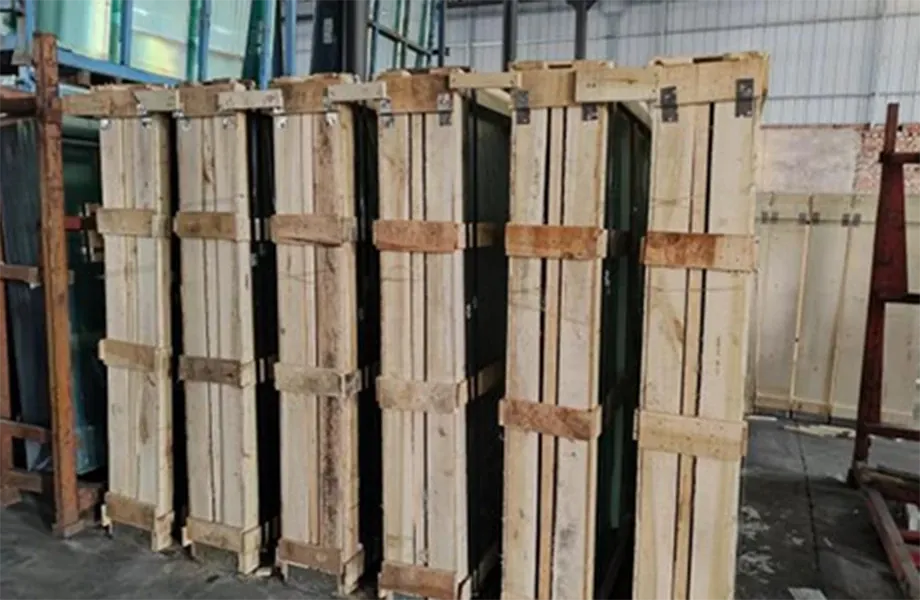Nov . 07, 2024 09:30 Back to list
Understanding the Process and Benefits of Glass Tempering Techniques
Understanding Glass Tempering The Art and Science of Strengthening Glass
In the contemporary landscape of architecture and design, glass has transformed into a vital component. From soaring skyscrapers to intricate glass facades, the use of glass has reached new heights. However, the requirement for both aesthetic appeal and durability has led to the evolution of a crucial process known as glass tempering. This process not only enhances the strength of glass but also contributes to its safety and versatility in various applications.
What is Glass Tempering?
Glass tempering is a manufacturing process that involves heating float glass to its softening point, typically around 620 to 700 degrees Celsius (about 1150 to 1300 degrees Fahrenheit), and then rapidly cooling it. This rapid cooling, known as quenching, creates a significant difference in temperature between the outer and inner layers of the glass, inducing stress that ultimately toughens the material.
The Benefits of Tempered Glass
1. Increased Strength One of the primary advantages of tempered glass is its strength. The tempering process can make glass up to five times stronger than untreated glass of the same thickness. This remarkable increase in strength allows tempered glass to withstand greater impacts and stresses, making it ideal for use in construction and various applications.
2. Safety Features In the event of breakage, tempered glass shatters into small, blunt pieces rather than sharp shards. This characteristic significantly reduces the risk of injury, making tempered glass a preferred choice for environments where safety is paramount, such as in buildings, shower doors, and glass partitions.
3. Thermal Resistance Tempered glass can also withstand temperature fluctuations without breaking. This thermal resistance is essential for applications where the glass may be exposed to direct sunlight or other heat sources. For instance, tempered glass is often used in oven doors and glass facades to ensure structural integrity under varying thermal conditions.
4. Versatility Due to its enhanced properties, tempered glass can be utilized in a wide range of applications, from residential windows to commercial storefronts, as well as in automotive and aerospace industries. Its adaptability makes it an attractive option for designers and architects seeking innovative solutions.
glass tempering

The Tempering Process
The glass tempering process can be broken down into several key steps. First, the glass is cut and polished to the desired dimensions. Following this, the glass is heated in a tempering furnace until it reaches the required temperature. The next step involves rapid cooling through air jets, which solidifies the outer layers quickly while allowing the inner layers to cool more gradually.
It is crucial to note that the tempering process must be conducted in controlled environments to ensure uniform heating and cooling. Any irregularities can result in internal stresses, leading to premature failure. Therefore, quality control and proper equipment are vital components in the glass tempering industry.
Applications of Tempered Glass
Tempered glass is ubiquitous in modern architecture and design. It is commonly used in
- Building Facades For aesthetic appeal and safety in high-rise buildings. - Shower Enclosures To provide a safe and stylish solution in bathrooms. - Glass Railings To enhance safety without compromising visibility. - Automotive Windows To ensure passenger safety and structural integrity.
Conclusion
Glass tempering exemplifies the harmonious blend of art and science. It has not only augmented the utility and safety of glass but also expanded its possibilities in design and architecture. As innovation continues to drive technological advancements, tempered glass will undoubtedly remain at the forefront, shaping the modern world while ensuring safety and durability. Whether in a home, a skyscraper, or an automobile, the strength and versatility of tempered glass will continue to captivate and inspire architects, engineers, and designers alike.
-
Safety and Style with Premium Laminated Glass Solutions
NewsJun.24,2025
-
Reinvents Security with Premium Wired Glass
NewsJun.24,2025
-
Premium Float Glass Line for Modern Architecture
NewsJun.24,2025
-
Low Emissivity Glass for Energy-Efficient Architecture
NewsJun.24,2025
-
High-Performance Insulated Glass Solutions for Modern Architecture
NewsJun.24,2025
-
Elevates Interior Style with Premium Silver Mirror
NewsJun.24,2025
Related PRODUCTS














